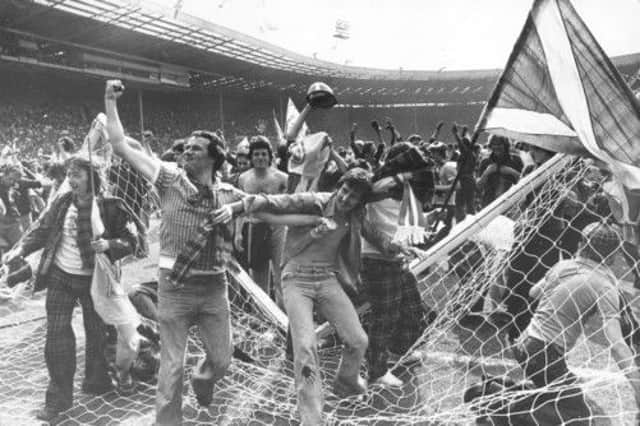Scotsman who saved Wembley from being demolished


Had it not been for Sir James Stevenson the stadium, which staged a home win in a World Cup final in 1966, would have been ground into dust 88 years ago. With the Football Association enjoying its 150th anniversary this year, it seems fitting to reflect on the history of the stadium which has played host to England for most of that time.
England played their first home internationals at the Oval in Kennington towards the end of the 19th century, and they only moved north of the River Thames in 1924. There, in the London Borough of Brent lay the British Empire Exhibition Stadium. The stadium, which had a capacity of 127,000, had been built as part of the an exhibition to showcase the fruits of colonialism.
Advertisement
Hide AdAdvertisement
Hide AdThe arena had cost £750,000 (around £40 million in today’s money), but the government always planned to demolish it once the empire exhibition ended in 1925. That was where Stevenson stepped in.
Stevenson, a Scot educated in Kilmarnock, was chair of the committee responsible for the British Empire Exhibition. He could not bear the thought of the stadium being pulled down and lobbied for its salvation. Luckily for England fans, he was successful, and the national team played their first game at the stadium on April 12, 1924, when they drew 1-1 against Scotland.
A year earlier, public appetite for the national stadium, and its popular Twin Towers, was evident when Wembley hosted its first FA Cup final. Around 300,000 fans from West Ham and Bolton were determined to witness the match. The FA had not anticipated such a rush for seats and had not ticketed the game. Over 200,000 crammed into the stadium and play only began when a policeman on horseback cleared the pitch of fans. The match became known as the White Horse Final.
The most significant moment at Wembley came 43 years later, of course, when England hosted the 1966 World Cup. Following a surprise run to the final, England beat West Germany 4-2 after extra time thanks to a Geoff Hurst hat-trick. Hurst’s controversial second goal, which did not appear to cross the line, and Kenneth Wolstenholme’s extraordinary commentary as the striker tucked away his third, ensured that the final would go down as one of the most memorable in history.
As well as the 1977 match between Scotland and England, Wembley was the scene of several famous occasions thereafter – including European Cup final wins for Manchester United and Liverpool. The stadium also hosted the British leg of Live Aid in 1985 and other famous acts like Madonna, Elton John and The Who.
But by the turn of the century it became clear that the stadium needed a facelift. The Twin Towers were showing signs of decay, the stadium, more grey than white, was desperately in need of a lick of paint.
In 1999, Wales had constructed a stunning 72,000-seater stadium in Cardiff and Wembley was losing its prestige as the most attractive arena in the world. “I’m not a romantic when it comes to the old Wembley,” says England fans’ spokesman Mark Perryman. “The toilets were rubbish. There weren’t enough of them, it was damp. The sight lines were bad. There were stanchions all around the ground, the seats were uncomfortable…”
Perryman was not alone in his views and the FA took action, closing Wembley in 2000 following the worst possible send-off – a defeat by old foe Germany. A month earlier a deal to build the new stadium for a maximum cost of £326.5 million was signed by Australian company Multiplex. A giant illuminated arch spanning 317 metres would be the centrepiece of the new stadium. The design impressed World Cup winner Sir Bobby Charlton. “Our national stadium is tired and it needs redoing – the best thing to do is knock it down and start from scratch,” said England’s record goalscorer. “The new stadium has been so well designed – and we’ve been told it will create the same atmosphere that the old Wembley was famous for.”
Advertisement
Hide AdAdvertisement
Hide AdIn a popular move, the FA took England on the road and moved the FA Cup final to Cardiff. Building was expected to take three years, but it was not until 2007 that the stadium reopened and it came in way over budget at £750m.
Still, the new stadium is a stunning sight. The facilities are state of the art, there are no restricted views and transport links have improved. The award-winning design has become a big hit with home and away fans alike, who block the steps at Wembley Park tube station on match days to take photos of the 90,000-seater stadium.
It has not all been plain sailing. The pitch had to be relaid ten times after complaints about it cutting up, but the FA has no doubt that the new Wembley is an improvement on the old one, which was once described by Pele as the “cathedral of football”.